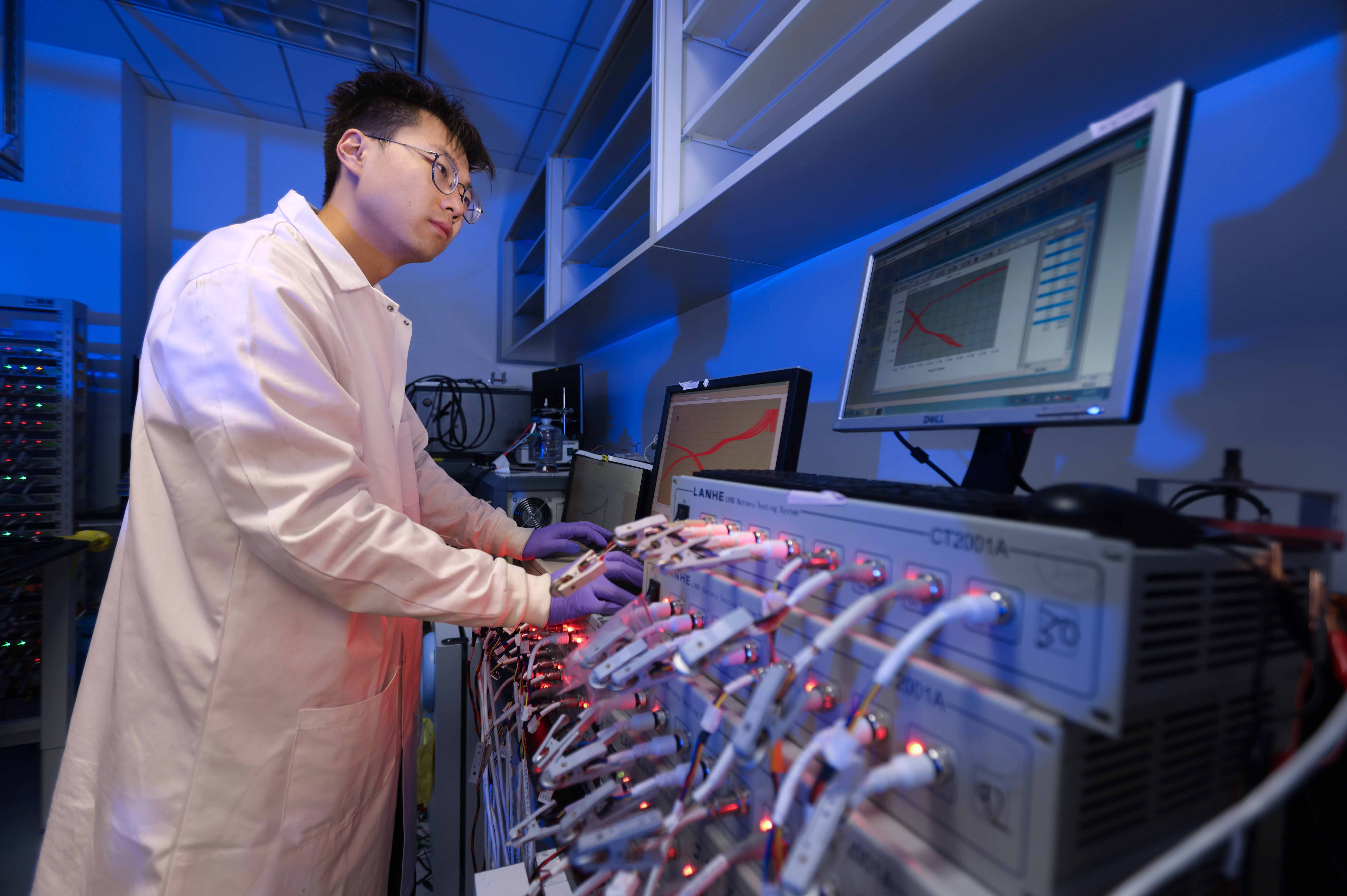UMD Battery Study Addresses Key Barrier to Electrifying Transportation
University of Maryland experts investigating modern energy solutions have cleared a path towards manufacturing fast-charging batteries for electric vehicles—a challenge imposing barriers on the wide adoption of electrified transportation. A team of electrochemistry researchers led by Distinguished University Professor Chunsheng Wang in the Department of Chemical and Biomolecular Engineering has discovered that an overlooked phenomenon can enable fast charging in lithium-ion batteries for electric vehicles, a milestone that was published in the journal Science today. In their paper, researchers revealed that “electro-osmotic drag,” a process widely recognized in fuel cells, also occurs in lithium-ion batteries and plays a decisive role in limiting how quickly thick, energy-dense electrodes can be charged. Building on this insight, the team developed an electrolyte design that achieved 80% charge within 13 minutes without compromising the battery’s energy density. This milestone represents a step forward for commercial EV batteries, which currently take 20 to 100 times longer to recharge compared to refueling gasoline-powered vehicles. To enable the wider electrification of vehicles, battery design must achieve a full charge in less than 15 minutes without compromising energy density. “It’s a breakthrough that brings fast, reliable electric-vehicle charging closer to everyday reality,” said Wang. To directly observe the electro-osmotic drag phenomenon, researchers utilized neutron imaging at the MIT Nuclear Reactor Laboratory, which enabled visualization of how solvent distribution shifts during fast charging. Modeling and electrochemical analysis further indicated that maintaining solvent continuity, alongside ion mobility, played a vital role in enabling fast charging in thick and dense electrodes. This work reframes the challenge of fast charging: it is not only about ion transport, but also about maintaining solvent continuity under non-equilibrium conditions. “The recognition of electro-osmotic drag overpotential provides a new conceptual foundation for electrolyte design, suggesting broader implications for technologies such as flow batteries, electrorefining, and membrane-based separations,” said Chang-Xin Zhao, postdoctoral researcher and first author of the paper. The UMD team collaborated with the National Institute of Standards and Technology, the Massachusetts Institute of Technology Nuclear Reactor Laboratory, SAFT America Inc, and Oak Ridge National Laboratory for this discovery.
November 13, 2025 Prev |


